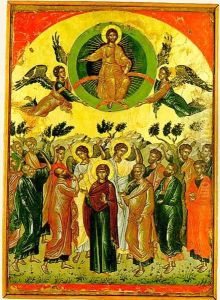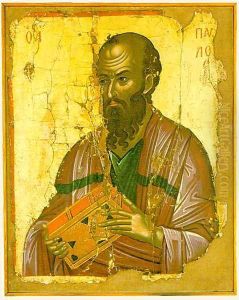Theophanes The Cretan Paintings
Theophanes the Cretan, also known as Theophanes Strelitzas or Theophanes Bathas, was a notable Greek artist of the 16th century, recognized for his significant contributions to the field of Byzantine art, particularly during the Cretan School period. Born around the year 1500 on the island of Crete, which was then a Venetian possession and a vibrant center of post-Byzantine art, Theophanes was a part of an artistic environment that was influenced by both Orthodox Christian and Italian Renaissance traditions.
Theophanes' early life and training remain largely undocumented, but his work suggests that he was well-versed in the techniques and styles of both the Byzantine tradition and the Western Renaissance. This synthesis of styles became a hallmark of the Cretan School. He is first documented in 1527, when he was already a mature artist, suggesting that he was born earlier in the century.
He is best known for his work as a fresco painter in Orthodox monasteries throughout the Greek world. His most famous works are the wall paintings that he completed in the Monastery of Stavronikita on Mount Athos in 1546, which are celebrated for their vivid expression and dynamic composition, marking a departure from the more rigid and hierarchical Byzantine conventions. Theophanes introduced a more humanistic approach to these religious scenes, infusing them with emotion and energy that connected with viewers on a personal level.
Theophanes' influence extended beyond his own works, as he trained his son, Symeon Theophanes, and possibly other artists, thereby ensuring the continuation of his stylistic legacy. His death is not precisely recorded, but it is generally accepted that he died around 1559. Theophanes the Cretan's work is considered a pinnacle of post-Byzantine art, representing the transition of Byzantine traditions into a new era that would eventually lead to the modern Greek state and its cultural identity.

